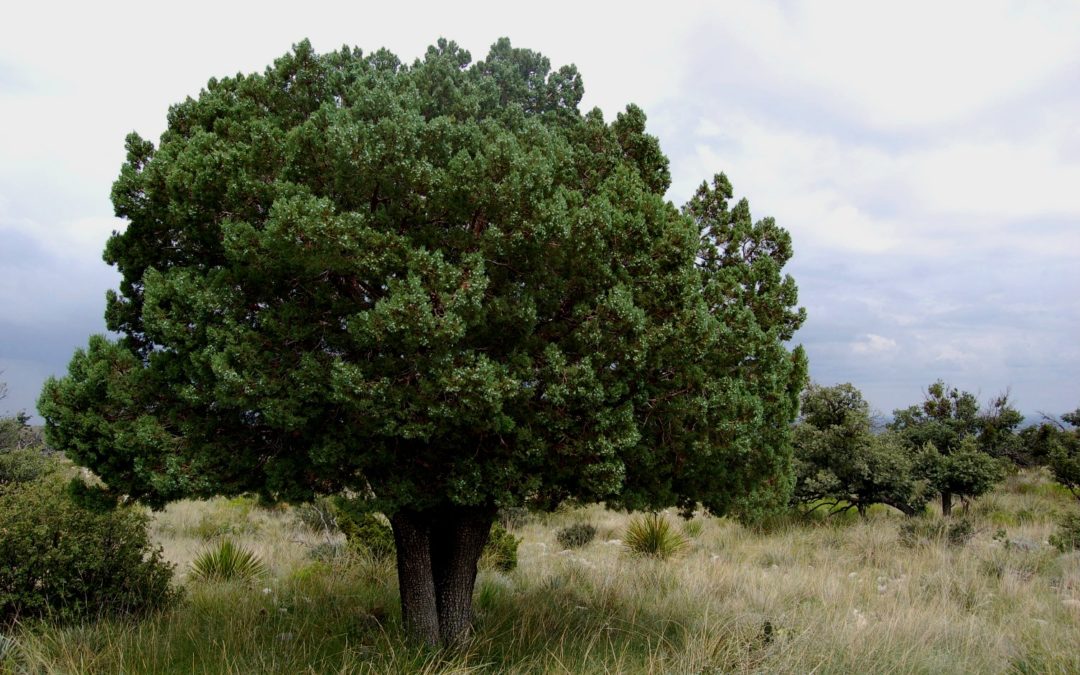Have you ever heard of forensic arboriculture? Probably not … but it is a thing! Figuring out why trees die can be a challenge as there are often multiple causes, and the clues may be obscured by time or a deep layer of rock mulch. If you look at enough dead and dying trees, though, patterns begin to emerge.
In our desert environment, one major overarching cause of tree death is thirst. Most of the trees we plant are not native, at least not to the desert grasslands that make up the native ecosystem throughout most of our region. Since these trees are native to regions with higher natural rainfall, we must make up the difference through irrigation.
Some trees die of thirst simply because there is not enough water in their root zones to supply the trees’ needs. Drought symptoms might include smaller leaves and less-dense canopies, dead twigs in the outer canopy, and droopy foliage. Because it takes a few years for trees to really show stress, it will take a few more years for them to show a strong response to improved conditions — but they will!
They will … assuming there aren’t other issues. One of the more common causes of drought stress, and possibly death, in trees is the presence of stem girdling roots. These are roots, usually from that same tree, that grow in a tight noose around the lower stem, just below ground level. Roots grow that way when they spend too long in a nursery pot or when they are only irrigated right at the very base of the tree. However these girdling roots start, they often end up causing a “choke point” where the trees’ vascular tissues are gradually crushed and the flow of energy-rich sap to the roots is reduced, as is the flow of life-sustaining water up to the leaves.
Stem girdling roots can be removed at planting, or even later if they are found. A sharp wood chisel often does the trick. Making sure trees are not planted too deeply is a great way to avoid creating stem girdling root problems. Many landscape trees are planted too deeply, which is rarely fatal on its own but can stunt growth, as well as setting up stem girdling roots.
Other kinds of girdling can kill a tree. All too often, mostly in public and large commercial landscapes, we find young, recently planted trees with large wounds just above soil level. These are wounds that have taken off the bark, leaving bare wood exposed to the elements. Any time a tree is wounded this way, it’s “living rind” of inner bark, cambium and sapwood are greatly compromised. The wound also exposes the inner wood to decay, so that if the tree doesn’t die quickly due to the destruction of the living rind, it runs the risk of breaking at the base when the decay cavity gets too big. By then, the tree may have some size and so present a real risk to people and their important things — cars, houses and such.
Another avoidable cause of tree death is poisoning with herbicides. In this time of instant gratification and “convenience is king” thinking, people often react to the presence of a few unwanted plants by applying a lot of chemicals to kill those plants. Often, tree roots grow in the treated areas and take in sublethal to lethal doses of herbicides. This happens in public spaces, commercial spaces, residential spaces … we could all be a lot more careful with our chemical use!
Herbicide damage usually reveals itself as weirdly deformed, often very stunted, leaf growth. These distorted leaves cannot capture enough carbon through photosynthesis to keep the tree healthy, so decline follows, with death nipping at its buds. Trees may recover from a one-time application, but repeated applications across seasons and years may well lead to death.

Keep your trees alive and healthy with these simple steps. First, make sure the tree doesn’t have a stem girdling root problem. This requires carefully digging around the base until you find the main root flare, and cutting away roots that are circling tightly around the stem. Then, make sure nothing else damages that lower trunk area, keeping that outer bark intact and protecting the living rind below. Finally, make sure your irrigation system is adequate. Established trees need water broadly out under the canopy, and even beyond, but not so much at the very base.


Mower or string trimmer damage to a young tree. This will lead to decay and disease entering the very base of the stem.
Other articles that might be of interest:
The Balancing Act of Watering Trees in the Fall and Winter
How to make a Tree Watering System for your established and mature trees
Tips to Keep Mature Trees Healthy

Have a question about the article? AskAnExpert@abcwua.org

